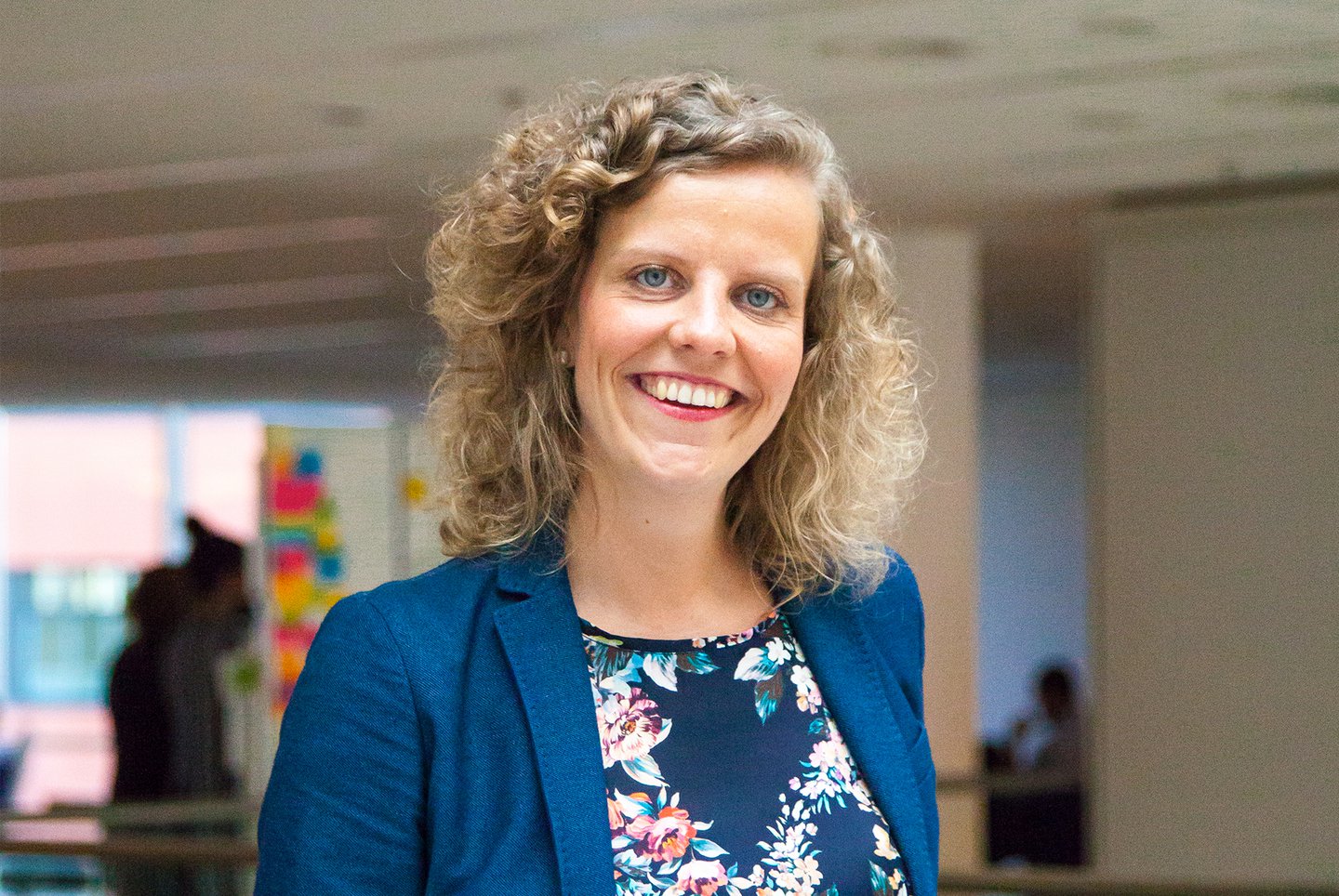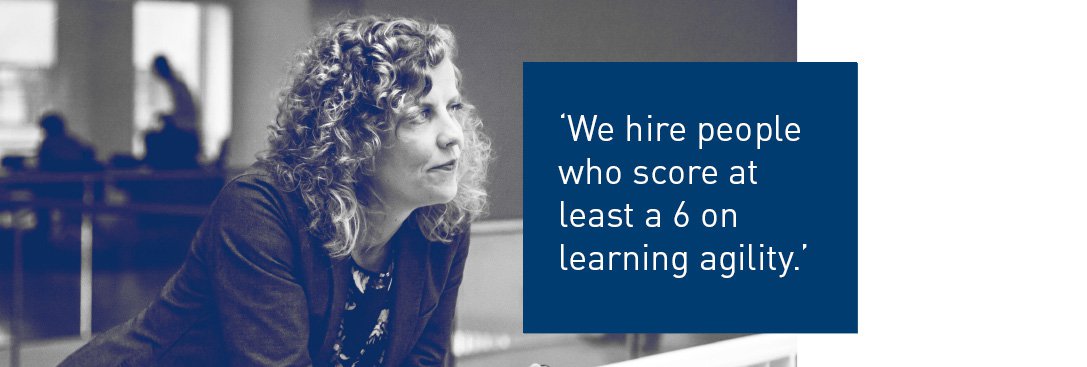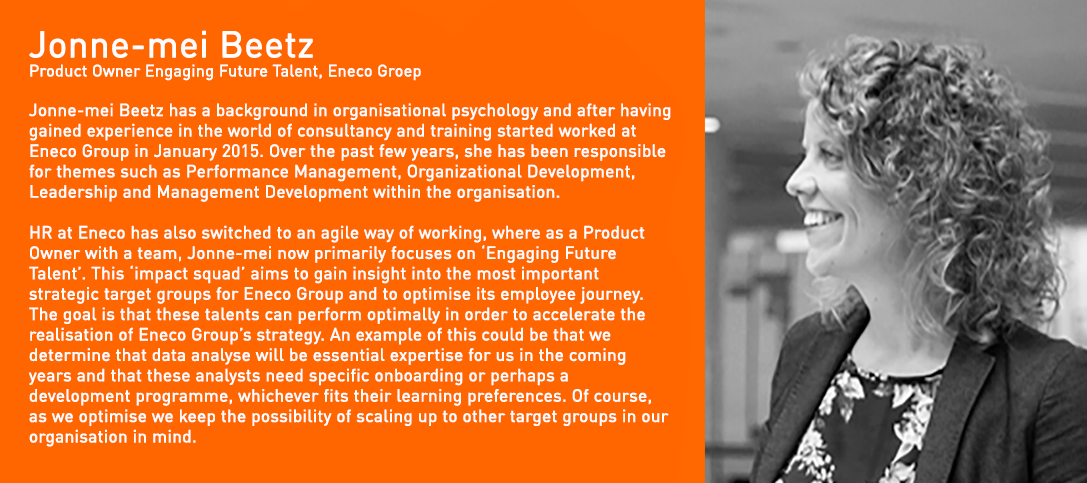
High Learning Agility leads to high performance
High Learning Agility leads to high performance
'We want to be ahead of the curve'
Rapid changes on the energy market force energy companies to let go of their familiar ways of doing things. But people are creatures of habit: employees are inclined to stick to their routines. How do you prepare a large organisation for change? And how do you know if your people are even capable of doing that? At Eneco Groep, they committed fully to Learning Agility, explains Jonne-mei Beetz, “Our position is that high Learning Agility leads to high performance. We are continuously collecting evidence for this.”

Why is a company like Eneco investing in Learning Agility?
Jonne-mei Beetz: “The explanation is simple: when the world around you is changing so quickly, you can’t sit by and carry on doing things the old way. We need to bring in the necessary flexibility. To do this, we decided in 2013 to select strongly for Learning Agility. If we want to respond to market conditions in the coming years, this will only be possible if our people are also flexible and can adapt quickly themselves. Our initial focus is on recruitment and selection: we hire people who score at least a 6 on Learning Agility. We are an organisation with a lot of on-the-job learning, which makes learning an important theme in our organisation. New employees also benefit from this focus on Learning Agility. By working in our changing organisation with colleagues who are also flexible and versatile, their need for renewal and dynamism is met. And they also develop more quickly.
We have also implemented Learning Agility in our programme for high potentials (this is one of our criteria) and all supervisors have a Learning Agility assessment done. Now that we have scores from so many people, we can look at how we can help them to develop further more effectively. The place Learning Agility occupies in our organisation has now been broadly accepted. The scores are recognised and the validity of the tests is no longer brought up for discussion as often.”
What does this investment in Learning Agility actually give the company? Are the people with high scores actually performing better?
“That is a good question. Here is another one: how do leaders with high Learning Agility perform? On the basis of the available data, we also look at the reverse side, we analyse the available data. The first indications are that learning agile leaders do indeed score higher on performance, but we still want more evidence. We are an organisation with many ‘orange’ people: result-oriented, high scoring on results agility and change agility. Just do it, that attitude. Whether people with a high score actually perform better is something we also compare with the business. Do they stand out? Sometimes they don’t, for example if they work under a less change-oriented manager. Another question is: how important is Learning Agility for a data analyst? Aren’t their competencies much more important for what they have to do? Ultimately, we would like to be able to substantiate the answer to such questions increasingly quantitatively.”
People who are naturally flexible and thrive in a changing environment could get bored when the water gets a bit calmer. Do you notice this at all?
“Not yet, but we will be sure to keep an eye on it. I don’t think this idea is illogical, but you can also stimulate people with internal development potential enough to keep them interested and motivated. To do this, a team should ideally consist of a mix of people who complement each other well. Then if one leaves, the whole team is not suddenly crippled. But we have not yet been able to link internal mobility figures to Learning Agility scores. We do often get the question of whether this minimum score of six is really necessary. Wouldn’t five be high enough? People with a score of six or higher are often difficult to find. We have stipulated that 80 per cent of the new intake must be above six and exceptions are only allowed in specific cases. We do this for a clear reason: our clients, competition and context are changing quickly and we need truly versatile people who can play a pioneering role.”
Research by HFMtalentindex has now shown that young people have somewhat lower Learning Agility. Does this mean that young talent is difficult to bring in?
“Of course that is not what we want. Young academics may have only just graduated, but they are still developing rapidly as people. We could be letting talent slip through our fingers by setting the bar so high for younger people too. The same applies for example to people over fifty. It is known for that age group that their Learning Agility also decreases, while they have often already proven their value to the company. From a recruitment standpoint, we have not chosen the easiest way. We go for the best match: that is the most valuable for both parties. In the end, it may turn out to be better to set the bar at an appropriate level for each age group, but that is something we need to learn from experience. And when I say experience, I actually mean the numbers. As an HR department, we have to learn to make our work more data-driven. All our employee data is a treasure with which we can do a lot more. Learning Agility is one of these data points – and certainly not the least important.”
'We have agreed that everything we do should produce something'
With increasingly agile work, you place ever more responsibility within the teams. How does that work?
“That is an interesting process, and we are learning a lot from it. The teams increasingly do performance management themselves, as a result of which we need fewer leaders. There is the risk that something slips through the cracks once in a while, but this is revealed in the evaluation and feedback. Because the teams also increasingly take care of these themselves. Where possible, technology lends a hand. For example, we have an IT team that stimulates self-awareness by having the computer ask every Friday afternoon whether they asked for enough feedback in the past week. In this way, everyone keeps each other sharp in an amicable way. The leadership also comes from the team, although this way of working has not yet crystallised fully. Because if the leadership is in the team itself, to whom do you call in sick? Who sends a company doctor? I don’t see such questions as growing pains, but as a quest. We are working together to find the best way to work intelligently. There is also another advantage of agile work in teams. Young people often get overlooked in a company. They come in with fresh ideas, but they have to pay their dues before they are taken seriously. And before you know it, they are assimilated and the freshness is gone. By working in agile teams, they get a chance sooner. And then this fresh wind we want can blow.”
How agile are you at HR itself?
“We are working hard on this: we are one of the first companies in the Netherlands that also has HR making the transformation to agile. A number of our business units already work in an agile way, and as HR we want to stay a step ahead. This gives us a better understanding of the challenges agile teams face, and what you can do as HR to help them be successful. For example, we are making it easier for employees and supervisors by creating an intelligent platform for HR. Why shouldn’t employees be able to request training via an app, or arrange their days off that way? We are setting up and expanding this now, which is quite a job. But it is also an interesting job, and I have high expectations. We have agreed that everything we do should produce something, whether it is for the people or for the business. If not, it is simple: we don’t do it.”
If you would like to read a more in depth explanation about the analysis and the theoretical background, download below the complete research article 'The impact of Learning Agility on the Growth in Performance'.
